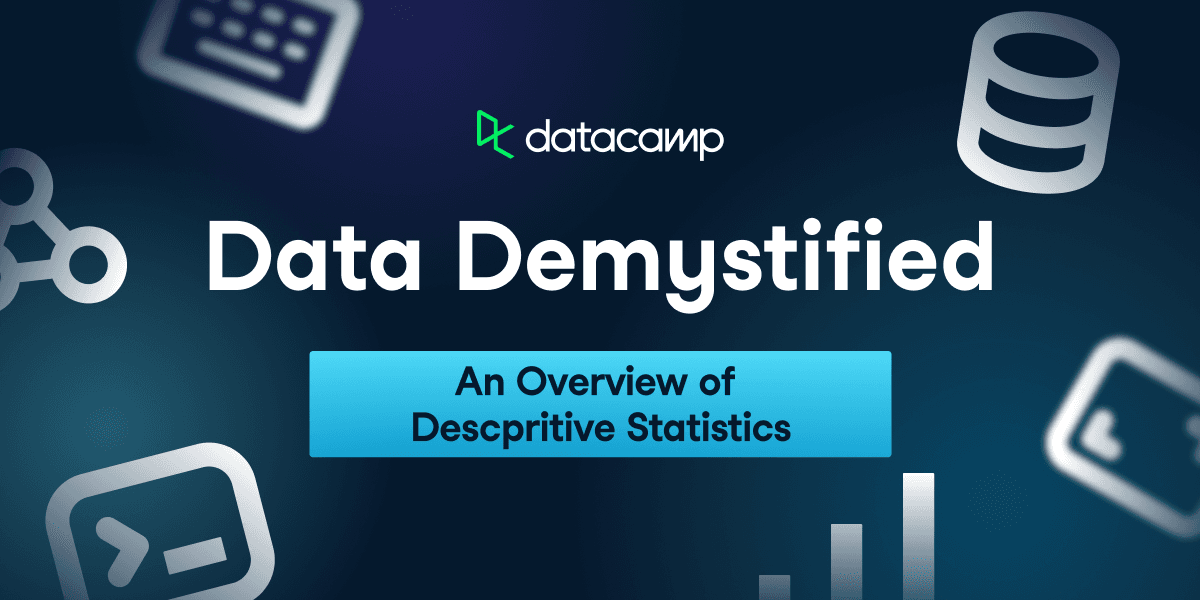Course
Data Demystified: An Overview of Descriptive Statistics
In the fifth entry of data demystified, we provide an overview of the basics of descriptive statistics, one of the fundamental areas of data science.
Updated Sep 2022 · 6 min read
Topics
Data Literacy Courses
4 hr
61.4K
Course
Understanding Data Science
2 hr
577.4K
Course
Understanding Data Visualization
2 hr
173.3K
See More
RelatedSee MoreSee More
Data Competency Framework: Templates and Key Skills
Discover how to build an effective data competency framework, the data and AI skills you need to include, and templates to help you get started.
Adel Nehme
8 min
Digital Upskilling Strategies for Transformative Success
Explore the power of digital upskilling in achieving transformative success and bridging the skills gap for a future-ready workforce.
Adel Nehme
7 min
What is Data Fluency? A Complete Guide With Resources
Discover what data fluency is and why it matters. Plus find resources and tips for boosting data fluency at an individual and organizational level.
Matt Crabtree
8 min
Making SMARTER™️ Decisions with Lori Silverman, author of Business Storytelling for Dummies
Richie and Lori cover common problems in business decision-making, connecting decision-making to business processes, the role of data visualization and narrative storytelling, the SMARTER™️ decision-making methodology and much more.
Richie Cotton
62 min
How Data Leaders Can Make Data Governance a Priority with Saurabh Gupta, Chief Strategy & Revenue Officer at The Modern Data Company
Adel and Saurabh explore the importance of data quality and how ‘shifting left’ can improve data quality practices, operationalizing ‘shift left’ strategies through collaboration and data governance, future trends in data quality and governance, and more.
Adel Nehme
41 min
[Radar Recap] The Art of Data Storytelling: Driving Impact with Analytics with Brent Dykes, Lea Pica and Andy Cotgreave
Brent, Lea and Andy shed light on the art of blending analytics with storytelling, a key to making data-driven insights both understandable and influential within any organization.
Richie Cotton
40 min
